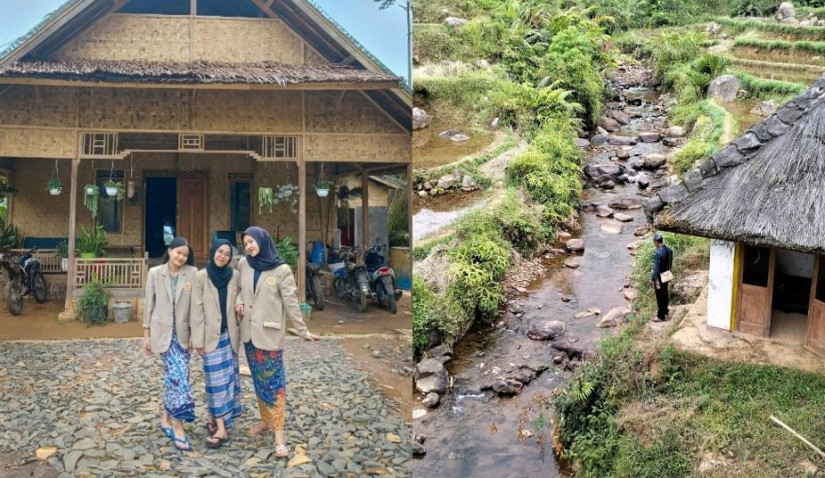
People living in the Gunung Halimun National Park area still hold onto the customs and traditions passed down by their ancestors.
However, they adapt to the changing times by utilizing various technological advancements, such as local television channels that showcase the community’s daily activities and internet networks.
What’s intriguing is that in the Kasepuhan Ciptagelar area, the electricity needs are met through Micro Hydro Power Plants (PLTMh), which harness renewable energy from river water flow.
The way of life of the Ciptagelar community, which maintains its cultural traditions while also using technology and renewable energy, is considered an example for villages in other regions.
Five UGM students, part of the Student Creativity Program in Social Sciences and Humanities Research, researched Kasepuhan Ciptagelar’s local wisdom and traditions, which use renewable energy to meet the village’s electricity needs.
The research team, mentored by Philosophy lecturer Dr. Sartini, consisted of Dimas Aji Saputra (Philosophy), Berliana Intan Maharani (Sociology), Ilham Pahlawi (Anthropology), Gita Dewi Aprillia (Psychology), and Masiroh (Communication Science).
The research was conducted by visiting Kasepuhan Ciptagelar, a traditional Sundanese hamlet in Sirnaresmi Village, Sukabumi Regency, West Java, from July 24-27, 2023.
The community utilizes local knowledge, beliefs, worldviews, and cultural traditions based on the values and norms handed down by their ancestors to build a self-sustaining energy village.
“When viewed through the lens of sustainable development, the people of Ciptagelar have implemented these principles in constructing PLTMh. They utilize natural resources and adapt them to their daily activities,” explained Masiroh.
“PLTMh may not necessarily operate with only a generator. Some rivers and forests need to be preserved.”
Berliana Maharani explained that the people of Ciptagelar fundamentally have a worldview called “kudu bisa ngigelan jaman, tapi ulah kabawa ku jaman,” which means they must be able to keep up with the times without abandoning the customs and traditions their ancestors entrusted to them.
The management of renewable energy sources through PLTMh cannot run just with a generator turbine as it also requires local wisdom that is still preserved.
The management of local wisdom in realizing a self-sustaining energy village is evident in the community’s efforts to preserve the forest.
According to Ilham Pahlawi, the people of Ciptagelar believe in “leuweung tutupan” (closed forest) to sustain the forest, represented through their belief in the forbidden forest.
“For the indigenous community, the forest plays a vital role as a source of water for rivers, which is used to drive the PLTMh turbine. They also have a tradition of planting trees at the beginning of each new year, known as ‘melak tangkal,’” said Pahlawi.
“This tradition is aimed at preserving the forest, water, and nature, which support the stability of river flow as a source of renewable electrical energy.”
Gita Aprillia explained that through this research, it is clear that the values of local wisdom among the indigenous people of Ciptagelar have driven the development of a self-sustaining energy village with an environmental perspective.
“The self-sufficiency of this self-sustaining village should be promoted and serve as an example for other villages. Additionally, we realize that Indonesia is rich in renewable energy sources, but unfortunately, they are underutilized,” said Aprillia.
Author: Gusti Grehenson

